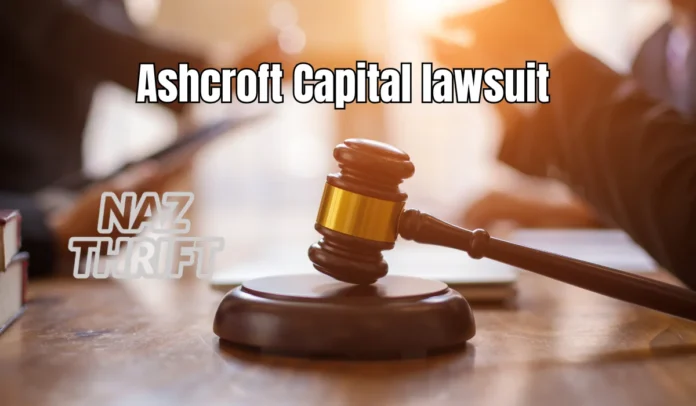In February 2025, twelve accredited investors filed Cautero v. Ashcroft Legacy Funds, claiming more than $18 million in losses tied to alleged misstatements by Ashcroft’s real estate syndication firm. The lawsuit centers on claims of overstated projected returns, inadequate risk disclosure, misuse of capital, and breach of fiduciary duty. Ashcroft Capital, long regarded for multifamily value add investments, now faces intense scrutiny from its limited partners and broader real estate investors.
As the case progresses through discovery and pretrial motions, it threatens to reshape confidence in private syndication deals. For anyone invested in or considering passive real estate funds, this case serves as a critical lesson in transparency, due diligence, and contractual best practices.
What Sparked the Ashcroft Capital Lawsuit?
The case was formally filed on February 12, 2025, in the U.S. District Court for the District of New Jersey under the name Cautero v. Ashcroft Legacy Funds. Plaintiffs allege Ashcroft inflated IRR projections by 4–6% and failed to disclose financial risks adequately leading to significant discrepancies between advertised returns and actual distributions.
Investors also cite continued sponsor fees during periods of underperformance and delayed, inconsistent communication as key grievances.
Core Allegations Against Ashcroft Capital
Misrepresentation of Return Projections
Plaintiffs claim Ashcroft overstated expected IRRs in pitch materials, webinars, and offering documents portraying an overly optimistic return model not reflected in investment performance.
Lack of Transparency & Communication
Investors allege vague reporting, delayed updates, and critical financial details omitted from quarterly statements undermining trust and decision making.
Misuse of Capital & Breach of Fiduciary Duty
The lawsuit suggests sponsor fees continued despite underperformance, and that asset allocations may not have fully aligned with initial private placement memorandums (PPMs).
Potential Violations of Securities Regulations
Plaintiffs argue that Ashcroft’s marketing may have breached SEC rules regarding private placement disclosures, raising compliance concerns.
Legal Proceedings & Current Status
As of mid‑2025, the case is in the discovery phase, with both parties exchanging financial records, emails, and testimonies. Ashcroft has filed motions to dismiss portions of the lawsuit, while investors seek broader access to internal documentation. Court filings may lead to settlement discussions or a trial, potentially in 2026.
Broader Implications for Investors and the Syndication Industry
Growing Investor Skepticism
Online communities are questioning the credibility of syndicators. Even well known firms face more scrutiny post lawsuit.
Risk of Regulatory Escalation
Heightened attention from the SEC could lead to tighter oversight of offering documents, valuations, and fee structures for syndication deals.
Shift in Operational Standards
Some syndicators may adjust underwriting assumptions, refresh reporting standards, and revise fee structures in response to emerging expectations from investors.
Ashcroft Capital’s Response & Internal Changes
Ashcroft has publicly denied all allegations, asserting that its disclosures complied with legal and industry standards and that market challenges not misconduct explained discrepancies. The firm claims to be maintaining operations without interruption while improving transparency, communications, and investor relations protocols.
Why This Matters for Passive Investors
Transparency Is Essential
Investors should not rely solely on marketing projections. Request complete financial reporting and question assumptions proactively.
Contracts Are Critical
Understand fee structures, distribution hurdles, and risk disclosures before committing funds.
Diversify to Protect Capital
Avoid overexposure to one sponsor or asset type especially during periods of litigation or underperformance.
Stay Informed & Proactive
Joining investor portals, staying updated on litigation progress, and consulting financial or legal advisers can help you stay ahead.
Read also: Pedro Paulo Business Consultant: Guiding Businesses Toward Strategic Success
Conclusion
The Ashcroft Capital lawsuit represents a pivotal moment in the real estate syndication sector one that may redefine how trust, transparency, and accountability operate long term. With over $18 million in claimed damages, allegations including misrepresentation of returns, misuse of funds, and weak investor communication have put a leading multifamily investment firm under scrutiny. While Ashcroft continues to operate and denies wrongdoing, the legal process is still unfolding.
For passive investors, the key lessons are clear: conduct thorough due diligence, demand regular reporting, and diversify investment exposure. For syndicators, it highlights the growing necessity to uphold rigorous disclosure standards and maintain respectful investor relations. No matter the outcome settlement, dismissal, or trial the case is sure to leave a lasting imprint on industry norms and investor behavior in private real estate investments.
FAQs
1. What is the core issue in the Ashcroft Capital lawsuit?
A group of investors alleges Ashcroft overstated return projections and failed to disclose key risks, leading to misinformed investment decisions.
2. How much money is involved in the case?
The lawsuit centers on approximately $18 million in alleged investor losses across 12 accredited individuals.
3. Is Ashcroft Capital admitting any fault?
No. The firm disputes all claims and maintains it followed standard disclosure and investment practices.
4. What stage is the legal process in currently?
As of mid 2025, the lawsuit is in the discovery stage, with both parties compiling evidence and filing pretrial motions.
5. What can investors learn from this case?
This case underscores the importance of clarity in investor documents, ongoing oversight, diversification, and active engagement with sponsors.




